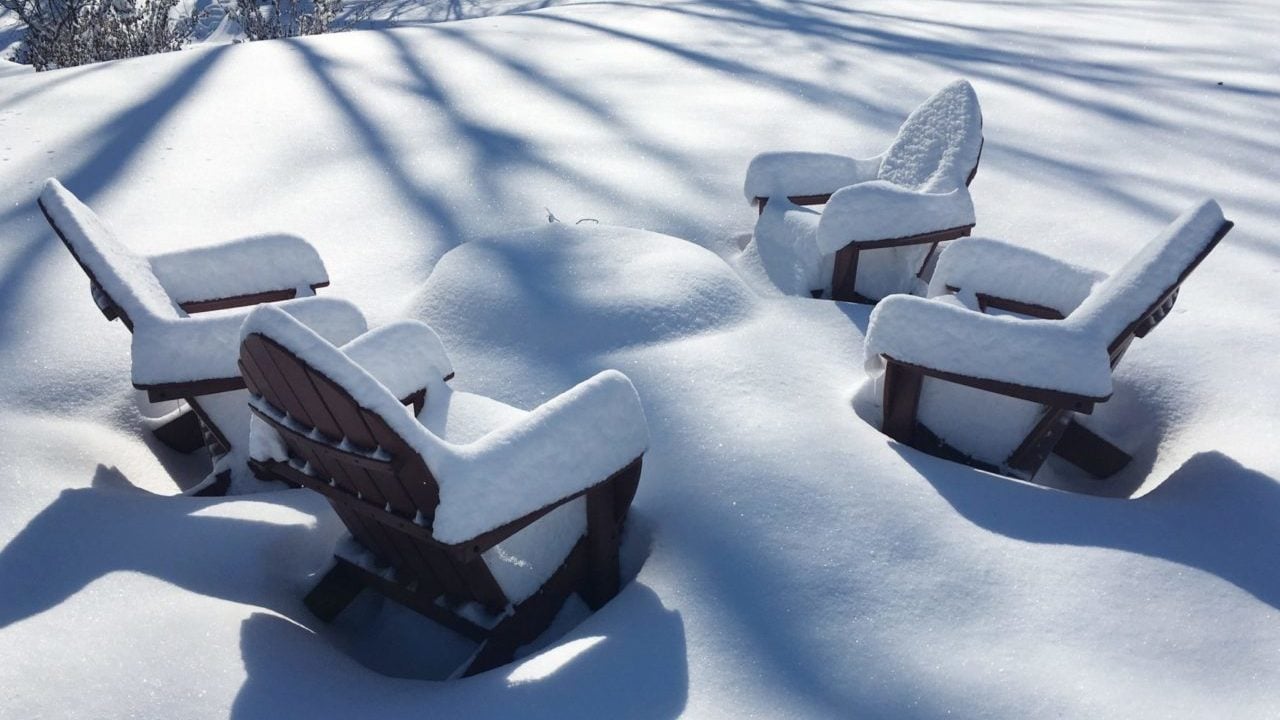How to store outdoor furniture

Come wintertime, your outdoor furniture likely sits untouched, unused and frigid outside. As spring rolls around again, you may come back to your patio furniture with the expectation that it is still in pristine condition. Unfortunately, without properly storing your outdoor furniture, you risk damage and weathering to the material, which comprises the integrity and longevity of your furniture.
Winters in Minnesota can be tough on outdoor furniture. Snow and ice can cling to fabrics and cause stains, mold and other damage. Wind and low temperatures can cause wearing on furniture, which affects the quality and appearance of your chairs, benches and stools. By taking the time to prepare your furniture for winter, you can extend the life of our patio furniture and enjoy it for years to come. Take these steps to properly storing your outdoor furniture and have one more reason to look forward to spring.
1. Clean your furniture
The first step in winterizing your patio furniture is to clean it. In doing so, your furniture will be ready to store over the cold months and will last longer by eliminating dust, dirt and other debris that can cling to your furniture and slowly erode the material. Depending on the fabric and the material of your patio furniture, you will have to clean it in different ways.
For all furniture, start by wiping down the surface with a dry towel to remove dust. Then, rinse off any metal frames with water. If you’d like, you can apply a coat of weather-proof paint to reinforce the material. Some furniture, such as treated wood or synthetic wicker, is more resistant to the outdoors. Even so, cleaning wood chaises, Adirondack chairs and swings will make storing your outdoor furniture easier and will make it last longer.
Be sure to check the materials and clean your furniture accordingly. Power washers can be harmful to even the most durable materials. Neglecting to dry your furniture after cleaning, especially metal pieces, can cause rust and damage. Use soft cloths, towels and if necessary, toothbrushes. Winterizing your patio furniture starts with a good cleaning. Once you have that done, you’re ready for the next step.
2. Store fabric in a dry space
Storing furniture with fabric, such as chairs with cushions or hammocks, takes an extra step. Keep fabric in a dry location away from direct sunlight. This will preserve the material and keep it fresh and clean for next spring. Extended exposure to sunlight can cause fading, while rain and snow will seep into the material and cause mold and other damage.
Prevent damage and fading of your patio furniture by keeping it stored in a safe place. This may be in a storage bin that can stay outdoors year-round. Alternatively, you can store your outdoor cushions and other furniture in storage bags inside your home. Be sure to keep your fabrics away from areas that collect excess dust, moisture or insects. With the fabrics taken care of, you can finally move on to getting the rest of your patio furniture ready for winter.
3. Keep your furniture safe from the elements
The key to taking care of your patio furniture and getting it ready for winter is to know what you can and cannot do with it. Winter in Minnesota is frigid and will cause damage to different materials. Plastic, for example, is not a very durable material. Leaving plastic furniture outside during the winter will cause it to crack and break, leaving it in poor condition for next year.
On the other hand, synthetic materials are strong, durable and can withstand drastic weather changes. Furniture made from high-density polyethylene (HDPE) is high-quality and reliable for the outdoors in Minnesota. Even so, if you want to winterize your patio furniture, try covering it with a durable tarp or vinyl sheet. This adds another layer of protection and will help block wind and snow from your furniture. Putting a sheet over metal furniture and other materials that are not made of HDPE is the preferred method of storing patio furniture over winter.
For a final step, you can store your outdoor furniture in your garage or a shed. While this is not always necessary, older furniture or furniture made out of less durable materials will last longer if you store it indoors. Take time this fall to get your patio furniture ready for winter and make it last far into the future.
Add long-lasting, winter-proof furniture from By the Yard
Taking extra steps every fall to winterize your furniture will keep it safe over the cold months. However, you can avoid all of that by shopping the high-quality, durable and winter-proof patio furniture from By the Yard. Our selection of HDPE chairs, tables and other outdoor furniture will brave the elements without requiring special winter storage. These pieces are also UV-stabilized, meaning they will not fade as easily as other furniture.
Winter in Minnesota can be harsh, and it can take years off your patio furniture. Rather than dreading next spring when you have to shop for outdoor furniture near you again, browse our collection of durable, quality, winter-proof patio furniture this fall.

